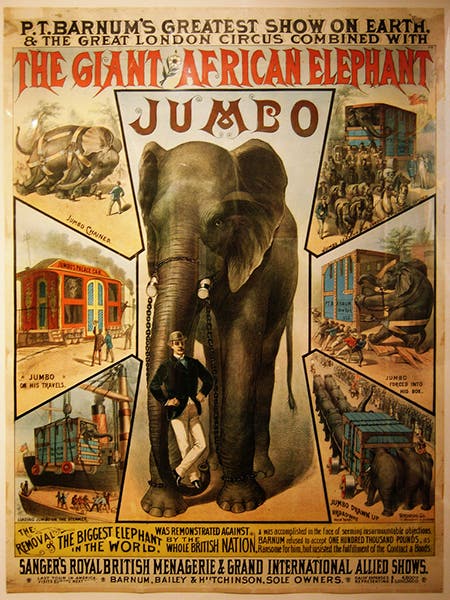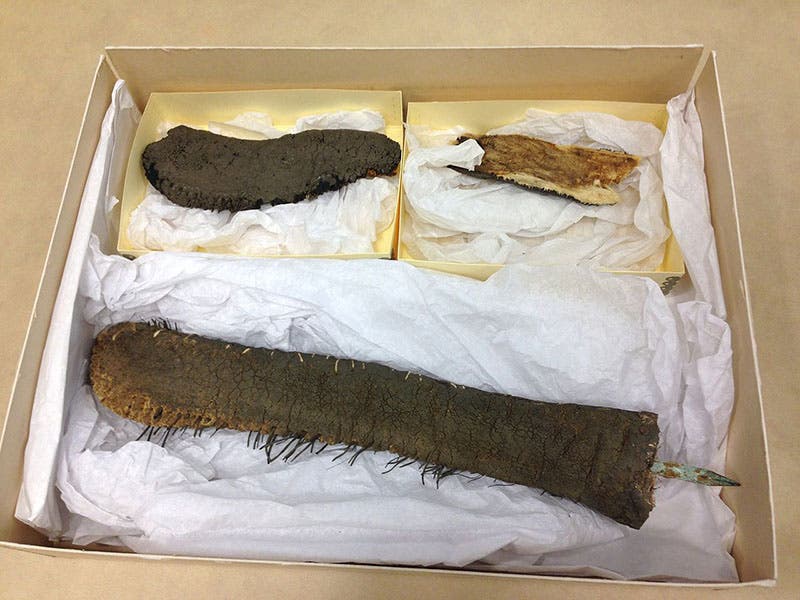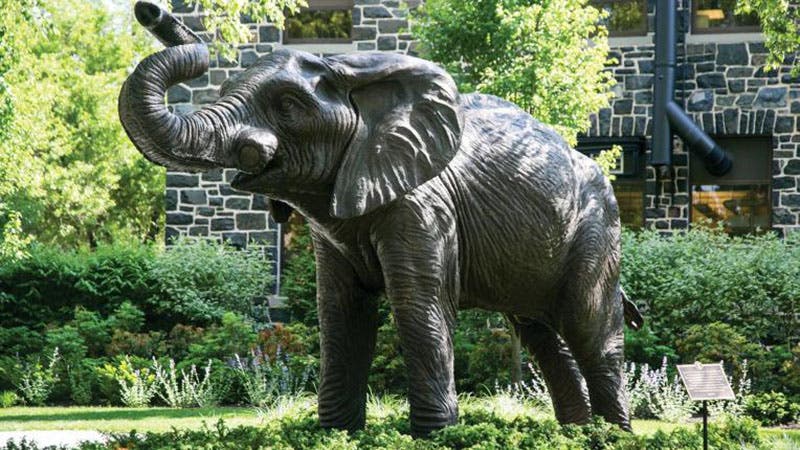Scientist of the Day - Jumbo
Jumbo the elephant, the pachydermal pride of two continents, died Sep. 15, 1885, after being struck by a locomotive at St. Thomas, Ontario. It was not a very big locomotive, just a switch-engine, but it was big enough. Jumbo had begun life in French West Africa and spent a short time at the zoo in the Jardin des Plantes (Botanical Garden) in Paris, before being transferred to the London Zoo, where he resided for 17 years and became quite popular with Victorian schoolchildren. Even his keeper became famous, seen with Jumbo in a photograph (first image).
When Jumbo began to exhibit unpredictable behavior related to musth (some now think it might have been toothache), and zoo officials feared for the safety of bystanders, Jumbo was sold to P.T. Barnum in 1882, to the outrage of the British public, who protested the sale, even as Jumbo travelled to the docks for shipment to America (second image). Jumbo (along with his keeper) toured the United States with the Barnum and Bailey circus for three years, as a poster attests (third image). In 1884, Jumbo led a parade of 21 elephants across the Brooklyn Bridge, to demonstrate that the bridge was safe. And then the next year, in St. Thomas, Ontario, he had his tragic accident, struck by an engine as he was led through a switching yard back to his railcar. In an often-reproduced photograph (fourth image), taken the day after the accident, bystanders vie with one another to be part of the visual record of Jumbo’s passing.
Barnum, ever the entrepreneur, sent Jumbo’s carcas immediately to Ward's Natural Science Establishment, run by Henry Augustus Ward, to be mounted, and Barnum then took the stuffed Jumbo, as well as Jumbo's skeleton, on tour for four more years. Then, in 1889, Barnum gave the skeleton to the American Museum of Natural History, and the stuffed Jumbo to Tufts University (for whom Barnum was a trustee), to be displayed in the new Barnum Museum of Natural History (fifth image).
Jumbo eventually (by the 1920s) became the mascot of the school, and athletic teams used to rub Jumbo's tail for luck before contests. This went on for many decades. But, on Apr. 14, 1975, fire consumed the Museum, and the entire contents was destroyed, including Jumbo. A quick-thinking staff member managed to salvage some of Jumbo's ashes, and they are kept to this day (it is said) on the athletic director's desk, in a peanut butter jar (a Skippy jar, with a Peter Pan Crunchy lid, to be specific; sixth image). Jumbo's tail, which had been removed and replaced with a surrogate well before the fire (it was being worn out by the athletes’ high-fives), is in the university archives (if you request an archival box that says “Jumbotail”, prepare to be surprised; seventh image). And of course, the word “jumbo”, which had no English meaning at all before the elephant, is now in common parlance, to designate, say, a large peanut butter jar.
A full-size bronze statue of Jumbo was installed not long ago on the Tufts campus. If you log onto the university webpage and click on “About”, the webpage that comes up has the statue right at the top, surrounded by students going to and from class. Clearly they are fond of the role Jumbo has played in the history of the University.
I do not know what it takes to see the peanut butter jar. But I must say, its existence does give an entirely new meaning to the acronym, PB&J.
William B. Ashworth, Jr., Consultant for the History of Science, Linda Hall Library and Associate Professor emeritus, Department of History, University of Missouri-Kansas City. Comments or corrections are welcome; please direct to ashworthw@umkc.edu.














